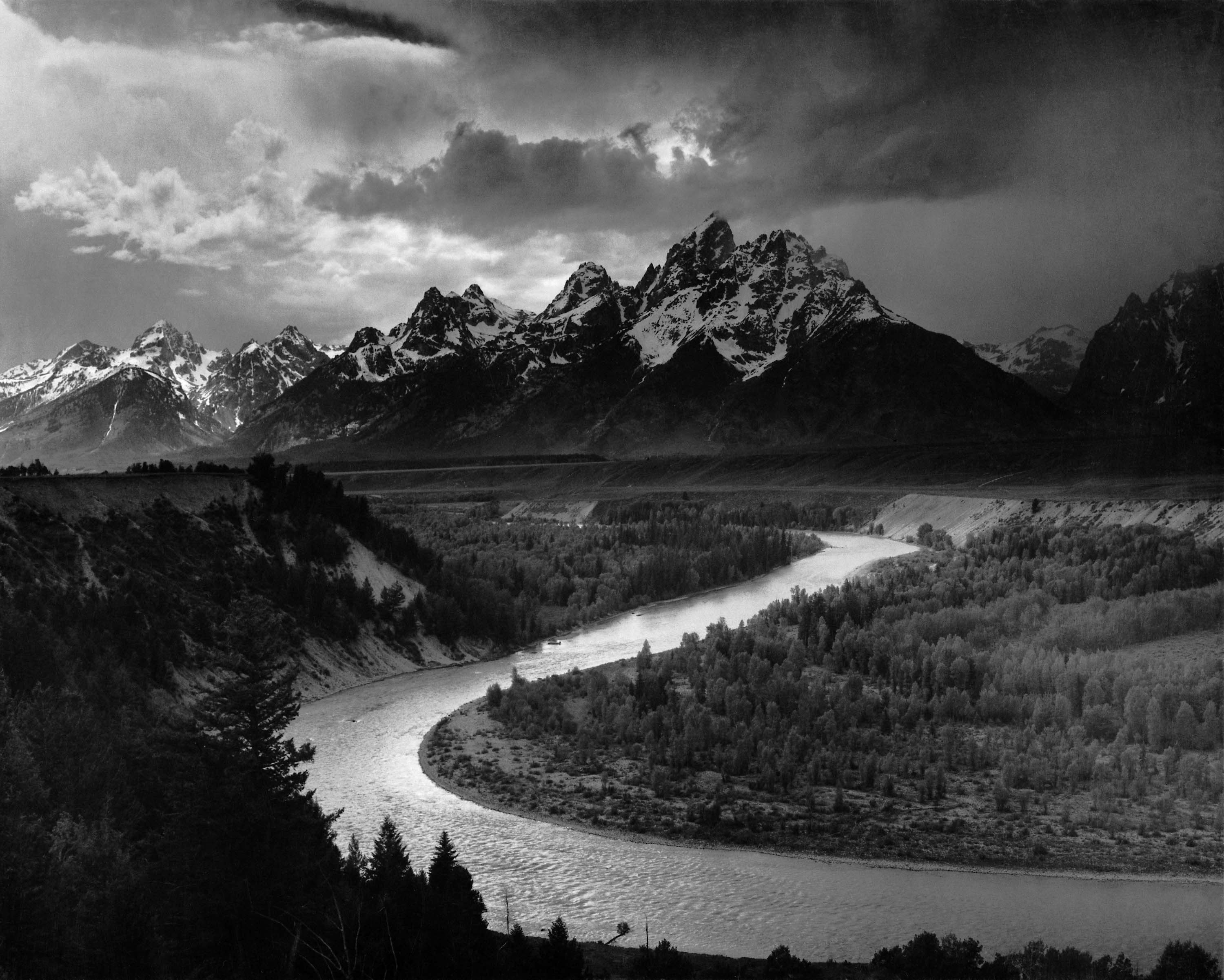
TECHNICAL
Adams uses grayish colours ranging from deep, dark blacks to more forgiving natural whites as was created with help of his own light grading system in order to implement a grey-scale image. He uses natural lighting extensively, accompanied by a high tonal range to present a highly contrasted image that highlights the darker areas with use of low exposure, however still retaining detail throughout the image, even in the dark shadows as a result of the dull, overcast skies above.
This contrast/tonal range as perceived in the photo helps add an intense, fierce tone, adding to the idea of the mountains seeming rather formidable which in turn gives the landscapes an austere and intimidating perception, helping demonstrate its size and beauty to the observer effectively. The high tonal range additionally causes the sunlight reflecting off the river to stand out due to its bright grayish colour, as well as the abrupt increase the shadows in the dark rock on the mountains and the darker trees in the foreground which create this extraordinary contrast.
To achieve this, he has most likely used a tripod to help keep his photos stable in order to avoid blur and loss of focus in his images, which we can see has worked wonders. As well as this, he probably used a slow shutter speed in order to capture the significant detail and to be able to focus the entire image with both the foreground and background being of high resolution, creating the high tonal range that can be distinguished here.
VISUAL
This image has a plethora of different textures as can be observed from the bright, glimmering water in the river to the dark, rugged, hard rock mountain range in the background as well as the trees and scrub-land which subtly break up the contrast. Furthermore, the overcast skies made up of grey clouds, just like the trees, create a balance of colour and shades throughout the image and is a perfect example of the theme of nature and its beauty which is what Adams as well as many other romanticist photographers strove to photograph.
CONCEPTUAL
The ideals of Romanticism in art and photography are that nature is powerful, beautiful and unpredictable. This is highlighted by the sky with occasional breaks where sunlight pierces through as well as the angelic light coming from behind the mountain, which imposes over the whole scene and creates a sense of superiority, emphasizing it’s bold and striking appearance.
CONTEXTUAL
In context, Adams himself spent a large portion of his life taking photographs in the West of America, especially in Yosemite and other parts of the Sierra Nevada mountain range. This was the core to what inspired him to excel in his photography, representing the untouched landscapes and the power of nature found in these places through his unique photography and his desire to show others, as best he could, the true essence and awe he felt when in such areas by capturing what he saw through his very own eyes.
Adams was also the co-founder of Group f/64 for which he invented the Zone System, (a technique of translating light into specific densities onto negatives and paper), giving photographers better control over their finished photographs. Adams is also known for promoting the idea of ‘visualization’, in which the photographer ‘sees’ in their mind’s eye the final photo before it is taken. This helped the photographer to achieve all of their desired aesthetic and mechanical effects in his photography as outlined previously.
